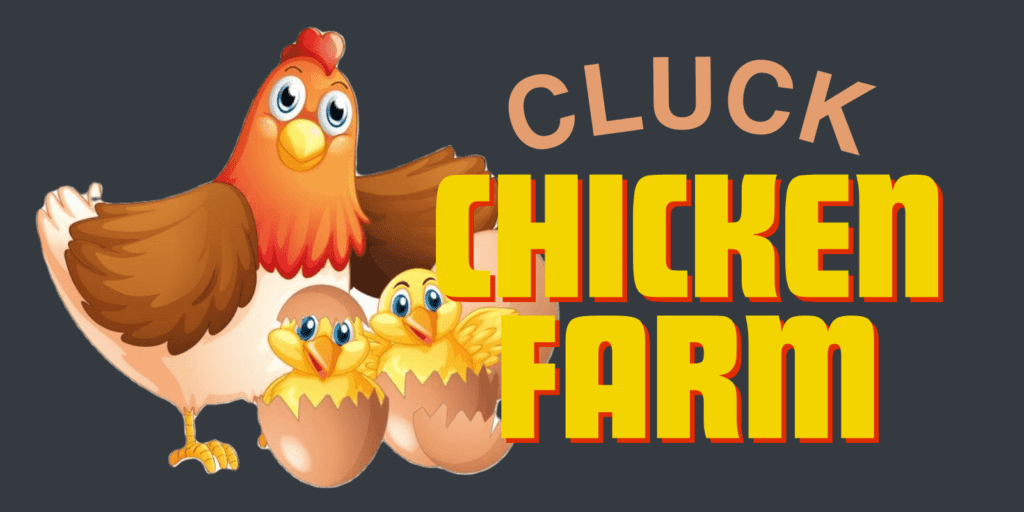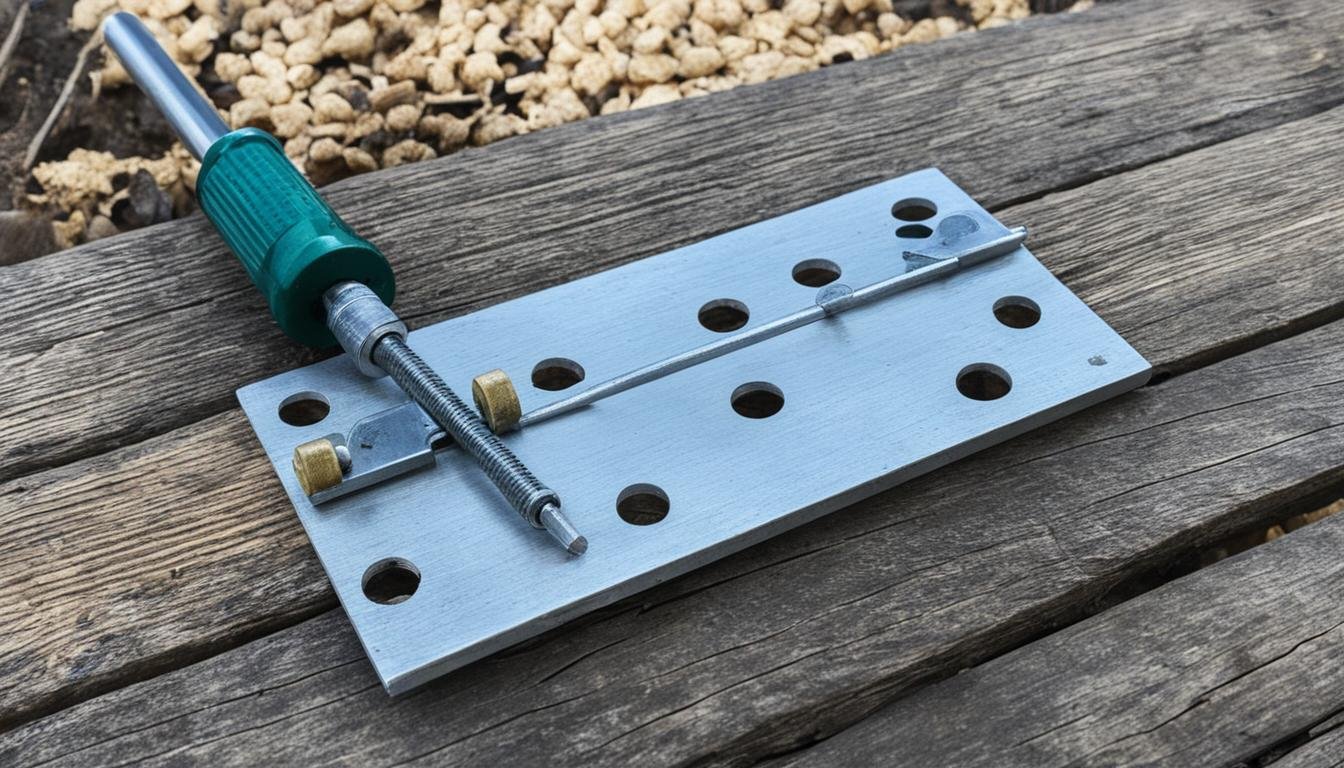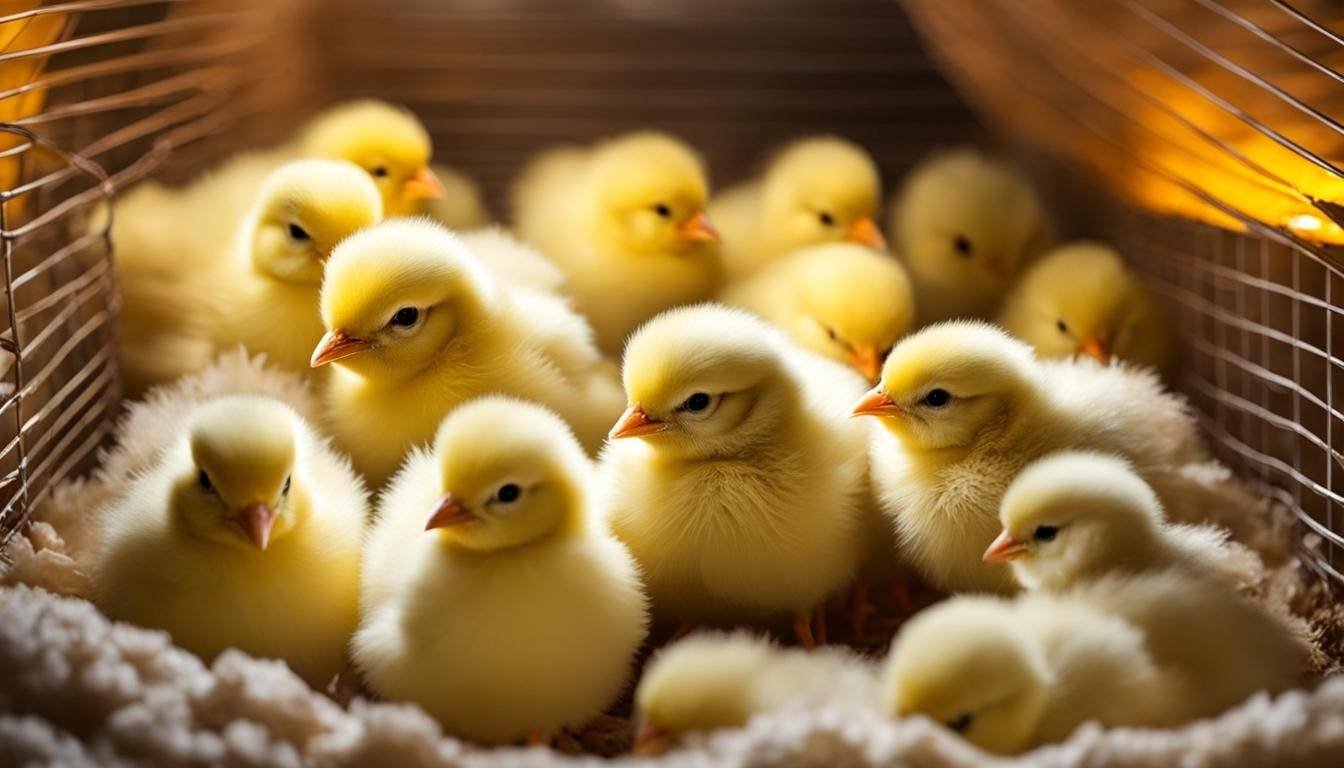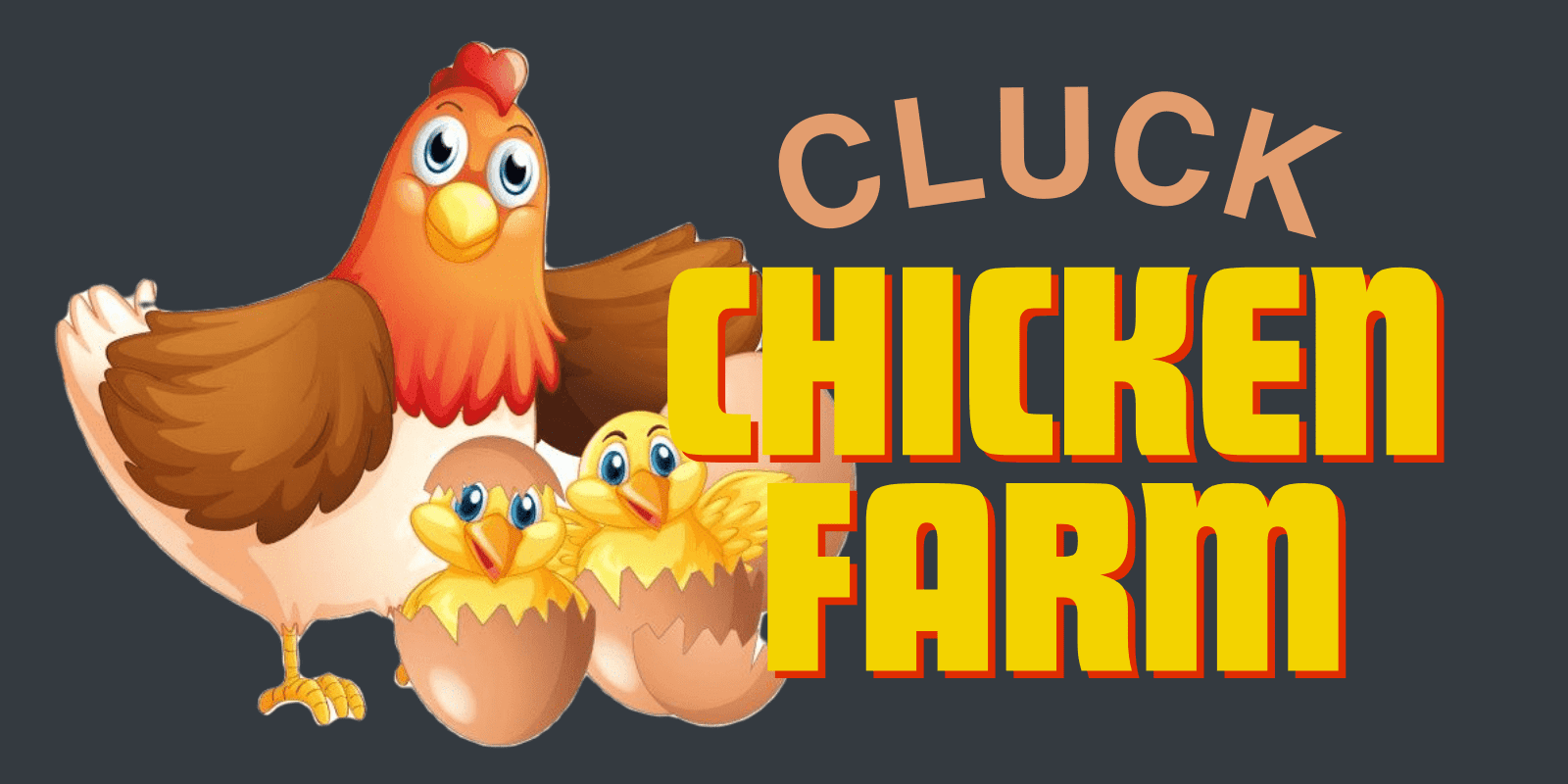Are you considering adding mealworms to your chicks’ diet but unsure about the appropriate age to introduce them? In this article, we will explore when chicks can have mealworms and the benefits of incorporating them into their feed.
Mealworms have long been recognized as a nutritious treat for chickens, providing essential nutrients such as protein, fat, energy, and essential amino acids. These nutrients are crucial for chick growth and development, supporting muscle growth, bone development, and tissue regeneration.
However, it is important to note that the age at which chicks can start eating mealworms may vary depending on their breed and specific needs. While broiler chickens bred for meat production can be fed mealworms at a young age to promote rapid growth, backyard chicks should wait until they are at least a month old.
Feeding mealworms to chicks too early can disrupt their balanced diet and potentially lead to health issues. It is crucial to prioritize their access to a well-rounded chick feed before introducing treats like mealworms. Additionally, chicks should have access to grit, which helps them digest the mealworms properly.
Stay tuned as we delve further into the nutritional benefits of mealworms for chicks, the age at which chicks can start eating mealworms, the merits of live versus dried mealworms, legal issues surrounding feeding mealworms to chickens, and alternative treats for your fluffy friends.
The Nutritional Benefits of Mealworms for Chicks
Mealworms offer numerous nutritional benefits for chicks, making them an excellent addition to their diet. These tiny creatures are packed with essential nutrients, including protein, vitamins, and minerals that promote growth, development, and overall health in chicks.
Protein
Protein is crucial for muscle growth and development in chicks, and mealworms are a rich source of this important nutrient. Their protein content helps chicks build strong muscles and supports overall body growth.
Vitamins and Minerals
Mealworms contain a variety of essential vitamins and minerals that contribute to chick health. Some of the key vitamins found in mealworms include leucine, lysine, and potassium, while important minerals include copper and selenium. These micronutrients support bone development, tissue regeneration, and the absorption of calcium, promoting overall chick well-being.
| Essential Nutrients Found in Mealworms | Benefits for Chicks |
|---|---|
| Protein | Aids in muscle growth and development |
| Vitamins (e.g., leucine, lysine, potassium) | Supports bone development and tissue regeneration |
| Minerals (e.g., copper, selenium) | Aids in the absorption of calcium |
Furthermore, these nutrients play a crucial role in maintaining the overall health and vitality of chicks. They help strengthen their immune systems, making them more resilient to diseases and infections that chicks may encounter. Additionally, mealworms can be particularly beneficial for chicks during periods of stress, such as moulting or after a predator attack, as they provide an additional nutritional boost.
Introducing mealworms into a chick’s diet allows them to benefit from these nutritional advantages, ensuring optimal growth and development.
The Age at Which Chicks Can Start Eating Mealworms
Feeding mealworms to chicks can be a nutritious and enjoyable treat. However, it is important to introduce them at the appropriate age to ensure their health and well-being. Chicks bred for meat production may be given mealworms at a young age to promote fast growth, but backyard chicks require a different approach.
It is recommended to wait until chicks are at least a month old before offering mealworms as part of their diet. This allows them to establish a balanced feeding routine and ensures that they receive all the necessary nutrients from their chick feed. Introducing mealworms too early can disrupt their diet and potentially lead to health issues.
Prioritizing a high-quality and balanced chick feed is essential during the initial stages of chick development. Once chicks have reached the optimal age for introducing mealworms, they can enjoy the benefits of this nutritious treat as part of their diet.
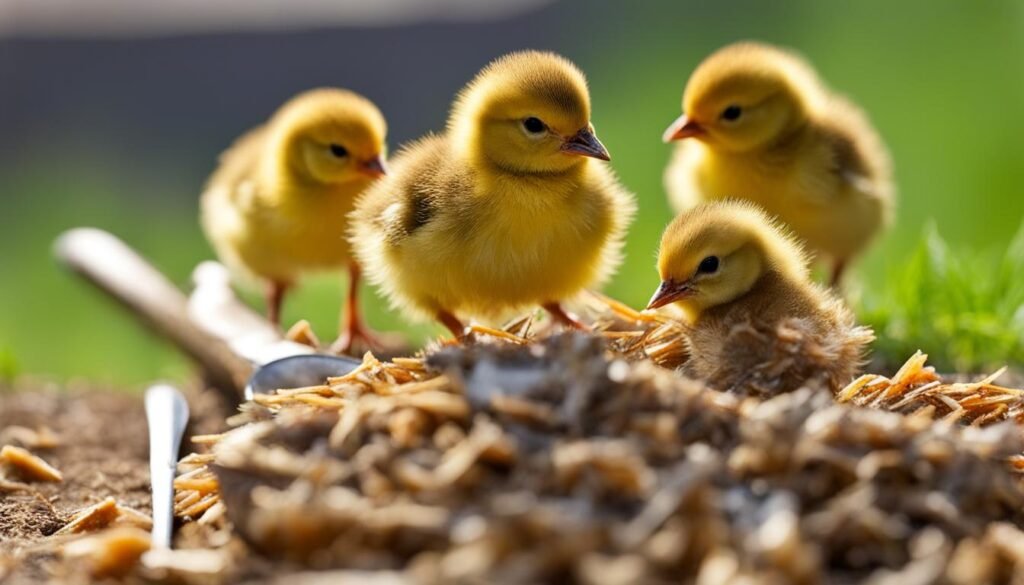
| Chick Age | Recommended Dietary Intake |
|---|---|
| 0-4 weeks | Exclusive chick feed |
| 4-8 weeks | Gradual introduction of mealworms |
| 8+ weeks | Regular inclusion of mealworms in diet |
As with any treat, moderation is key. It’s important not to overfeed mealworms to chicks, as they should still receive the majority of their nutrition from their formulated chick feed. By following these guidelines, you can ensure that chicks have a balanced diet and enjoy the benefits of mealworms at the right age.
Live Mealworms Vs. Dried Mealworms for Chicks
When it comes to feeding mealworms to chicks, there are two options to consider: live mealworms and dried mealworms. Both options have their own benefits and nutritional differences.
Benefits of Live Mealworms
Live mealworms offer several advantages when it comes to feeding chicks:
- Higher fat and protein content: Live mealworms are higher in fat and protein compared to dried mealworms. This makes them a valuable source of essential nutrients for growing chicks.
- Increase in water content: Live mealworms have a higher water content, making them easier to digest for chicks. The additional moisture helps keep chicks hydrated and supports overall health.
Benefits of Dried Mealworms
Dried mealworms also offer their own unique benefits:
- Convenient and long-lasting: Dried mealworms have a longer shelf life and can be stored for extended periods without the need for refrigeration. This makes them a convenient option for feeding chicks over a longer period of time.
- Variety of options: Dried mealworms come in different varieties, such as sun-dried or freeze-dried. Each variety offers slightly different nutritional profiles, providing versatility in feeding options for chicks.
When choosing between live and dried mealworms, it is important to prioritize high-quality mealworms to ensure optimal nutrition for chicks. Look for reputable brands that offer safe and nutritious mealworms for feeding. Now, let’s take a closer look at the nutritional differences between live and dried mealworms for chicks:
| Nutrient | Live Mealworms | Dried Mealworms |
|---|---|---|
| Protein | Higher content | Varies depending on the drying process |
| Fat | Higher content | Varies depending on the drying process |
| Water | Higher content | Negligible |
Table: Nutritional Differences Between Live and Dried Mealworms
As seen in the table above, live mealworms generally have higher protein and fat content compared to dried mealworms. They also provide additional moisture due to their higher water content. However, it is important to note that the nutritional profile of dried mealworms may vary depending on the specific drying process used.
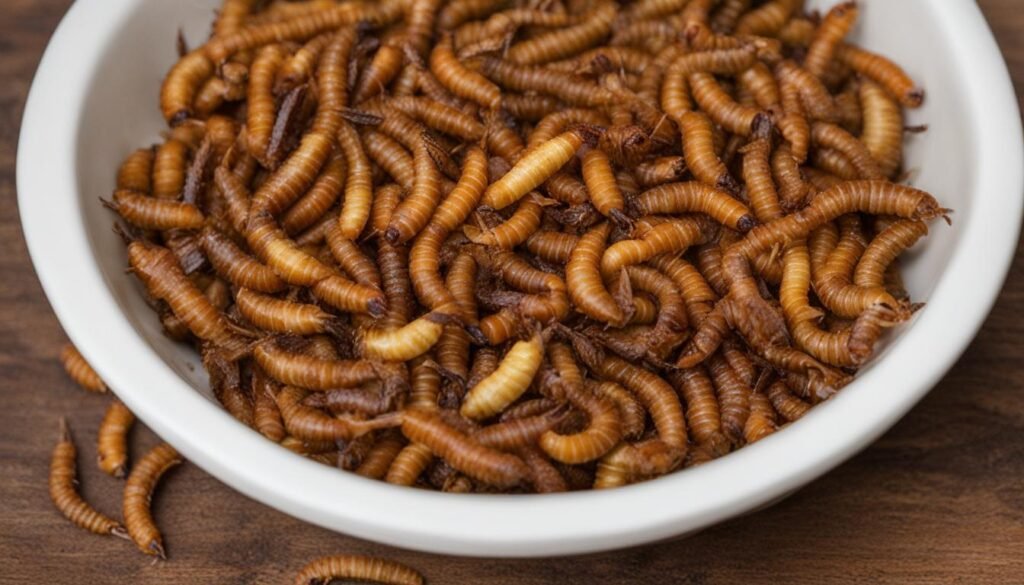
Why Mealworms Can Be Illegal in Some Places
In some places, including the European Union and the UK, feeding mealworms to chickens is illegal. This ban stems from concerns regarding the safety and origin of mealworms, specifically related to the use of animal protein in their diet.
Mealworms can be fed styrofoam or other questionable fodder, which raises the potential for disease transmission. To prevent the spread of diseases like Bovine Spongiform Encephalopathy (BSE) and foot and mouth disease, there are broader regulations in place that restrict the feeding of animal products to farm animals.
While there are ongoing discussions to relax these regulations in the future, it is crucial to adhere to the legal restrictions currently in place. This ensures the safety and well-being of both the chickens and the consumers.
Alternatives to Feeding Mealworms to Chicks
While mealworms are a popular treat for chicks, there are other healthy alternatives to consider. Chicks can be offered a variety of treats, including fruits, vegetables, insects, and cooked eggs. Treating chicks with foods like tomatoes, oatmeal, strawberries, bananas, and apples can provide nutrition and variety in their diet.
Here are some nutritious options for chick feed:
- Fruits: Chicks can enjoy small pieces of fruits like apples, strawberries, and bananas. These fruits are not only tasty but also provide essential vitamins and minerals to support their growth.
- Vegetables: Leafy greens such as spinach and kale are excellent options for chicks. They are rich in nutrients like calcium and iron, which are important for bone development and overall chick health.
- Insects: In addition to mealworms, you can offer other insects like crickets or black soldier fly larvae to your chicks. These insects are packed with protein and make a great alternative treat.
- Cooked Eggs: Hard-boiled eggs can be a nutritious addition to the chick’s diet. Eggs provide high-quality protein and essential amino acids, promoting healthy muscle and feather development.
It is important to note that some foods should be avoided when feeding chicks. Toxic foods like onions, chocolate, avocados, and moldy bread should never be given to chicks as they can be harmful to their health.
Conclusion
Wrapping up, feeding mealworms to chicks can be a nutritious and enjoyable treat. These tiny morsels provide essential protein, vitamins, and minerals that support the growth and development of your chicks. However, it is crucial to introduce mealworms at the appropriate age and in moderation.
Experts recommend waiting until chicks are at least a month old before incorporating mealworms into their diet. This ensures that they have established a well-balanced chick feed and are ready to handle the additional treat. Live mealworms, with their higher nutrient content and easier digestion, are a preferable choice over dried mealworms.
Legal restrictions on mealworms in some regions highlight the importance of sourcing high-quality and safe mealworms for chicken feed. To ensure the health and well-being of your chicks, be diligent in choosing reputable suppliers who prioritize the welfare of the animals.
Remember, there are alternative treats available for chicks that provide a variety of nutrition and flavors. Fruits, vegetables, insects, and cooked eggs can be introduced to keep their diet interesting and balanced. By offering a diverse range of treats and practicing responsible feeding habits, you can create a healthy and happy environment for your chicks.
